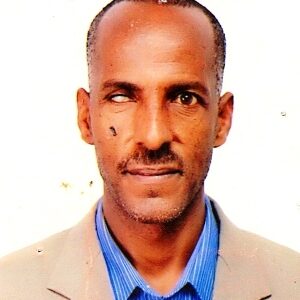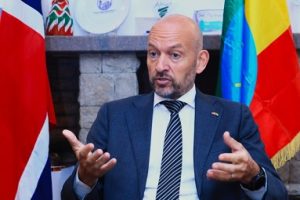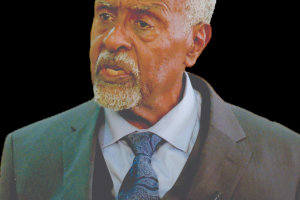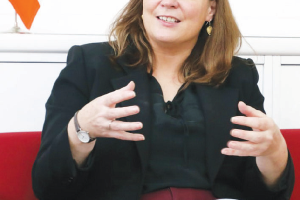
BY ZEKARIAS WOLDEMARIAM
East Africa is one of the important regions of the continent in many ways. It is strategically located in the crossroads of Africa, the Middle East and Europe. Home to more than 400 million people the region also embraces people of diverse language, culture, religious assets. However due to factors like colonization, trade and the impacts of modernization, these assets of the people are not properly harnessed to support the economic and social development of the people.
However, studies in the field indicate that the countries of the region should stop looking towards the external, western culture and focus on developing the indigenous art, culture and language of the people so as to ensure development. They also argue that if properly nurtured the people of the region have rich artistic, cultural, and linguistic assets and diversity that can be exploited to assist their overall development.
Recently, a symposium has taken place here in Addis Ababa concerning the role of Art and Culture in Regional Integration and Development. The idea was initiated by our ministry and organized in collaboration with Ministry of Foreign Affairs.
The Ethiopian Herald has had a brief stay with Awlachew Shumneka (PhD), who is a scholar in Linguistics, and Director of Language, Culture and Translation Development Directorate with the Ministry of Culture. He is also one of the Coordinators and Paper Presenter at the Symposium. He says “East Africa has a big resource, especially in the field of Culture. The idea behind is it is possible to spur development by creating regional integration through cultural development. In this regard, the symposium aims to respond how we can harness our cultural assets for development.”
Could you tell us about the role of art and culture for regional integration?
This is mostly based on research. This can be viewed from four angles. The first is language. The region has many cross border languages. We have also languages resources. If we wisely use these resources, they are helpful for development and integration. Among the cross boarder languages in East Africa are Somali, spoken in Somalia, Ethiopia, Kenya and Djibouti, Tigrinya spoken in Eritrea and Ethiopia, Afan Oromo, spoken in Ethiopia and Kenya … etc. If we take at regional level, Kiswahili can serve as a vehicular language for all. Therefore, there is likelihood that we can use them for regional integration.
On the other hand, language is a resource for diversity. They have embraced immense knowledge. If we nurture them at different levels, for instance in Ethiopia Amharic is used as a working language. Just as the trans-boundary languages, some languages are given recognition. Other languages are also being used as regional working languages. Languages are growing up. If we nurture language, they will nurture development and integration. This emanates from the notion that if we encourage diversity, it will encourage development and integration.
If we take culture, there is also diversity. Both East Africa and the member states have their respective cultural diversity. These cultures have various knowledges and have resources that can facilitate development and resolve conflict. Therefore, if we encourage diversity there are possibilities that can encourage integration. In the field of indigenous knowledge we cannot separate language and culture. They mostly go together. Language displays culture. Language will have diversity when there is cultural diversity. When there is cultural diversity there would be diverse indigenous knowledge like traditional conflict resolution mechanisms, environmental protection, traditional medicine … etc. Safeguarding these knowledge helps in regional integration. In addition, creative arts like film, theatre and other indigenous contents are believed to contribute for development. The big issue here is at East Africa level we have to identify and develop our indigenous cultural assets rather than resorting to European knowledge. We also have knowledge and civilization. We have to use them for our development alongside other knowledge’s.
How are the countries in East Africa working in it?
Some of the countries are applying indigenous knowledge especially in issues like conflict resolution. Otherwise, the western knowledge is overwhelming the indigenous ones. Many studies recommend that this is becoming a threat so we have to look into ourselves. Western cultural invasion is observed in education. It has an impact on our development as we have become onlookers. Most of the studies indicate that there are effective indigenous conflict resolution mechanisms, but are under severe pressure of modern thinking. We are not using the indigenous
dispute resolution mechanism because the law also favors the modern methods. Other Indigenous knowledge like traditional medicine are not also given due attention.
In East Africa as well as in our country there is language diversity. But some people perceive developing languages may erode unity that brings integration. How do you think it can enhance integration without eroding unity?
In our country, there are many languages and culture. The level of development varies. Some of them are developed especially due to the large scale language development works. For instance, recently three languages have been assigned alphabets and have become official and instructional medium. Many have also become media languages. Regional languages have also become official languages as well as instructional media even up to the university level. These are typical tools that speed up the development of the language and culture. Currently in our country in addition to Amharic, four other languages are recommended to be working languages. These need due attention as they connect nations, nationalities and peoples. If people live together, they have to learn the vehicular languages. It is for their advantage and national unity. They bound us together. In addition, each language also grows up together. Language is something that we learn. I can learn either Afan Oromo or English. If we believe in this diversity has no harm on unity. What we need to do is to bring language that can excel and develop consensus on their significance of the nation. The region is also mostly characterized by diversity. When we make some language grow it doesn’t mean that minorities should disappear. Governments must do support these languages to grow up.
What do you think should other sectors like the economy support the growth of the culture?
The growth of language and culture helps the growth of the economy. The reverse should also be true. Though there is some level of concern by other ministries, there are still limitations in allocating budget and resource for the growth of culture. Especially at the lower echelons there are many pitfalls. The language and culture growth contributes for economic development. It needs a lot of resource for research, documentation. For instance, if we take media, they need a lot of resource. If we take about film production it is full of challenges. There should be due consideration on tax exemption. Due attention should also be given for interpretation. A lot of work remains in interpretation since it has technological implication. Language development touches almost every sector. Therefore, all sectors need to support language development as it contributes for the growth of their own sector.
How do you see the contribution of various media to language development?
There are some encouraging steps but not to the required level. They have not done a job that matches the development needs of our culture and languages. The media also needs support. For example, technology is a decisive element, either for interpretation or others. There are some efforts but these efforts are bound by resources. It is difficult to become multilingual overnight as it needs a lot of effort. But there are some attempts at this time. Financial and human resource is a big limitation as a result we are not able to reach the required level.
What do you think should the government and experts in the field do?
We as experts should do our best for that end. For instance, so far we had no language policy. The language policy was devised recently. Now we have to work hard on the implementation. There are policy recommendations for the promulgation of media use legislation, translators and translation as well as linkage between sectors. There will be a linguistic affairs council. It will embrace all stakeholders. But the development so far is the outcome of the provisions of the constitution which states that nations and nationalities would develop their culture, language and history. They are not outcomes of a linkage formed so far.
Can you tell us the enabling situations and the challenges against art and culture contribution to regional integration?
The main enabling factor is the structure of the Ministry of Culture. There are two state ministers for the culture sector alone. Previously it was very small. Now there are many affiliate institutions under the two state ministers. It has also a good enabling capacity. The policy is also ratified and is another enabling factor.
The challenge is resource. Ministry of Culture has no funding other than government budget. If these things are improved and if the implementation rules and regulations are improved I believe that change would come soon.
In general, this is only a beginning. We are the seat of AU. But so far we have not yet held any cultural conferences. This is a good beginning though not to the scale of our expectation. To the future, we have to promote this experience and carry out similar continental conferences.
Such continental language confe rences should take place here in Addis Ababa which is the seat of AU. Stakeholders like Ministry of Foreign Affairs should collaborate with Ministry of Culture and take the issue seriously, and raise the regional conference to continental level in the future.
Thank you very much!
You are welcome!
The Ethiopian herald June 18/2022





